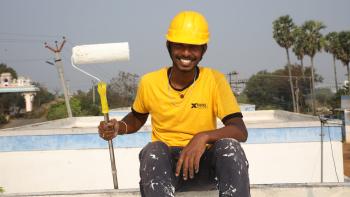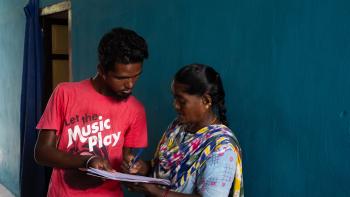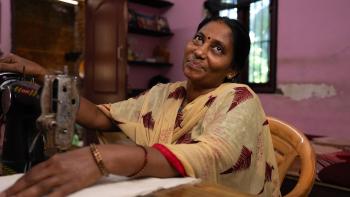Strategies for Affordable Housing and Thriving Communities
Turning Empty Spaces into Affordable, Sustainable Homes
Affordable Housing, The Missing Piece in Europe’s Just Transition Puzzle
Can a transition to a greener economy be just if millions of people still lack access to safe, affordable housing? As Europe embarks on its ambitious journey toward a climate-neutral future, it risks overlooking one of the most foundational elements of a truly Just Transition: housing. Far more than just shelter, housing underpins economic stability, social equity, and environmental sustainability.
Can a transition to a greener economy be just if millions of people still lack access to safe, affordable housing?
As Europe embarks on its ambitious journey toward a climate-neutral future, it risks overlooking one of the most foundational elements of a truly Just Transition: housing. Far more than just shelter, housing underpins economic stability, social equity, and environmental sustainability. Ignoring this critical pillar means leaving behind the very communities most affected by the green transition—workers in transitioning industries, low-income families, and marginalized groups. Unless housing becomes central to the green agenda, the promise of justice in this transition will remain unfulfilled.
When we talk about the EU’s Just Transition policies, it’s easy to applaud the generous funding streams and financial mechanisms aimed at reskilling workers, diversifying economies, and encouraging green investments.
Yet housing—an essential pillar of economic stability, social equity, and environmental resilience—remains largely overlooked.
Without access to affordable homes, workers and families in transitioning regions face significant barriers to stability and inclusion. Energy-inefficient housing compounds these challenges, driving up utility costs and disproportionately affecting low-income households already struggling with the economic effects of the green transition and creating a widening gap between those who can adapt to a greener economy and those left behind. These pressures risk creating a two-tier society where sustainability becomes a privilege rather than a shared benefit.
By integrating housing into Just Transition policies, we can ensure that revitalized regions are not only economically diverse but also socially inclusive, environmentally sustainable, and livable for generations to come.
Affordable and energy-efficient housing is vital to achieving a fair and inclusive Just Transition, particularly in coal-dependent regions where energy poverty is disproportionately high.
Retrofitting homes offers a tangible solution, reducing utility costs for vulnerable families, lowering greenhouse gas emissions, and creating stable, local jobs for displaced coal workers.
In addition to retrofitting homes, rethinking how we use existing resources such as vacant real estate presents another powerful strategy for addressing both housing shortages and climate goals. Across Europe, millions of homes and buildings sit vacant, representing a significant opportunity to address both housing shortages and climate goals.
Affordable housing can be created by converting vacant real estate, a strategy that significantly reduces the embodied carbon emissions of Europe’s building stock—one of the largest contributors to CO2 emissions.
Europe’s housing crisis is not a matter of scarcity but of misaligned priorities.
Across the continent, 38 million homes sit vacant, alongside underutilized industrial spaces and office buildings left empty by the remote work revolution. Projects like ‘Empty Spaces to Homes’ (ESTHer), funded by the Laudes Foundation and led by Habitat for Humanity International, demonstrate what is possible. By retrofitting unused spaces and implementing governance models such as Social Rental Agencies, ESTHer has transformed vacant properties into affordable, energy-efficient homes for vulnerable populations. This approach not only addresses housing shortages but also aligns with climate goals by reducing the reliance on high-emission new construction.
Despite these innovative examples, the scale of these initiatives is by no means sufficient, and housing focus remains largely absent from the EU’s Just Transition framework to the local actions on the ground. The Just Transition Fund, for instance, prioritizes industrial transformation and worker reskilling while providing only limited support for housing initiatives. Yet, housing is a critical enabler of both climate action and social equity.
To truly embody the principles of justice, Europe must elevate housing as a central pillar of its green agenda. A dedicated Housing Commissioner could play a pivotal role in addressing this gap. The Commissioner’s role could be to champion initiatives that prioritize housing in Europe’s journey to meet climate and social equity goals. This includes advocating for sustainable construction practices, prioritizing retrofitting over new construction, and encouraging member states to integrate housing into their Just Transition plans. For coal-phase-out regions, retrofitting projects offer transformative potential—reducing energy poverty while providing employment opportunities for displaced workers. Achieving these goals requires more than funding—it demands governance models that promote long-term sustainability, financial systems that extend beyond temporary subsidies, and a construction industry committed to innovation and responsibility.
Housing must transition from being treated as an afterthought to becoming the missing piece in Europe’s Just Transition agenda puzzle.
This piece is also an effective way to bridge high-level policy frameworks with tangible impacts on affected communities, ensuring a Just Transition that leaves no one behind.
Author: Laura Palencikova, Project Officer, Habitat for Humanity Europe and the Middle East
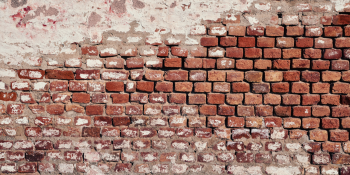
Affordable Housing: The Missing Piece in Europe’s Just Transition Puzzle
JANUARY 25, 2025

Home Equals Transforming Lives and Building Hope
For communities across the globe, having a safe and stable home is the foundation for a brighter future. This is especially true in marginalized areas where access to basic amenities and legal housing remains a challenge. Habitat for Humanity’s “Home Equals” initiative stands strives to empower families and communities to build a better life.
For communities across the globe, having a safe and stable home is the foundation for a brighter future. This is especially true in marginalized areas where access to basic amenities and legal housing remains a challenge.
Habitat for Humanity’s Home Equals initiative strives to empower families and communities to build a better life.
Lighting the Path Forward in “Stari Lozja”
In the informal settlement of “Stari Lozja” in Kumanovo, a city in North Macedonia, residents like Shaip Ramadani live amidst significant challenges. Shaip, a 50-year-old Roma rights activist, has been striving to improve living conditions in his neighborhood. His family home, built in 2004, remains unlegalized—a common issue for his neighbors as well. This lack of legal recognition prevents residents from accessing favorable loans and support needed to improve their homes.
Through the Home Equals initiative and the development of a new Detailed Urban Plan, Shaip and his neighbors have renewed hope. The plan aims to provide a pathway for legalizing their homes, paving the way for critical infrastructure and community development. “My property title has still not been processed because they are working on cases from 2014,” Shaip explains. “As a result, we face many challenges. For instance, we can’t access favorable loans to expand the house, and we are at a standstill.”
Despite these hurdles, progress has been made. The installation of new streetlights, secured through active citizen participation in the Local Leadership Group, has brightened the settlement’s streets and spirits. “The street lighting is now much better than before. However, we still need a legal road, a water supply network, a sewage system, as well as a kindergarten, playgrounds, a health clinic, a post office, a park, and other amenities essential for modern living,” Shaip emphasizes.
Shaip’s optimism remains steadfast as he envisions a future where his children and grandchildren can thrive. “We must all hope for this so that the youth don’t leave for abroad,” he says. For the 9,000 residents of “Stari Lozja,” the promise of improved living conditions through the Home Equals initiative kindles hope for a better tomorrow.
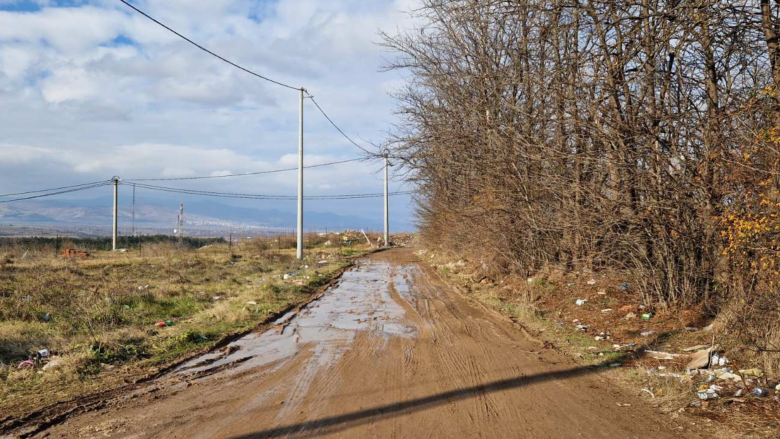
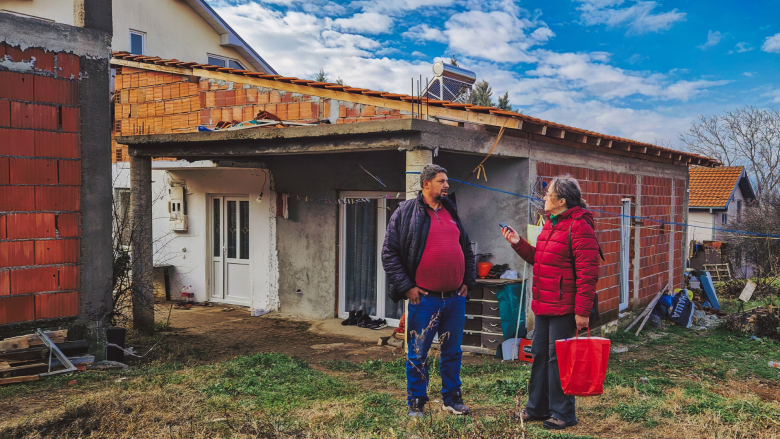
A Mother’s Determination in Shuto Orizari
In Shuto Orizari, Macedonia’s only Roma-run municipality, located on the outskirts of the capital Skopje, the story of Almadet Shain highlights the resilience of those who face daily struggles yet remain hopeful. Almadet, a mother of two, lives in a home battered by the elements. Windows tremble under the winter wind, the roof is shattered, ceilings leak, and the pervasive smell of mold reminds her of the work still to be done.
“When it rains, water pours through our windows; I am always rolling up the carpets and mopping,” she shares. Yet, her resolve never wavers. Caring for her children and her ailing father, Almadet meets each day with courage and love.
Through the Home Equals initiative, Almadet and her family are on the brink of receiving new doors and windows. These improvements will seal their home from the cold and rain, ensuring warmth and comfort for her children. Her determination resonates with mothers everywhere who dream of a secure and nurturing environment for their families.
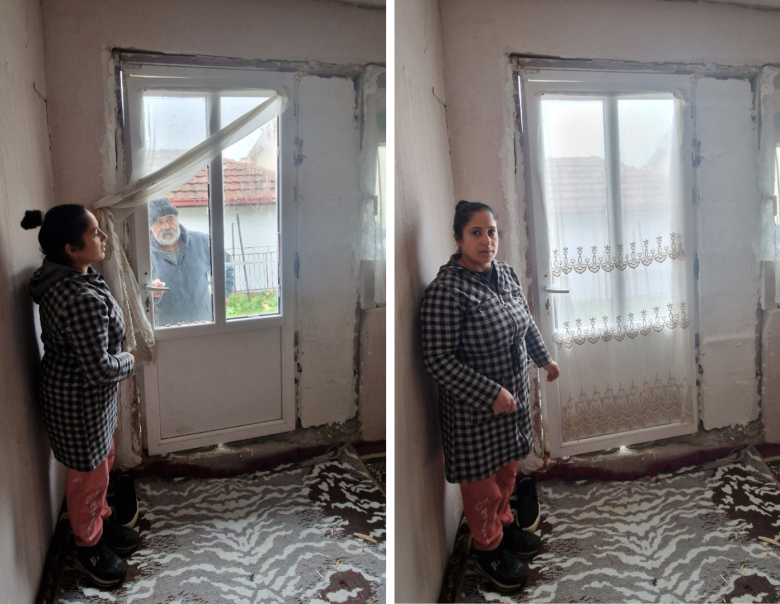
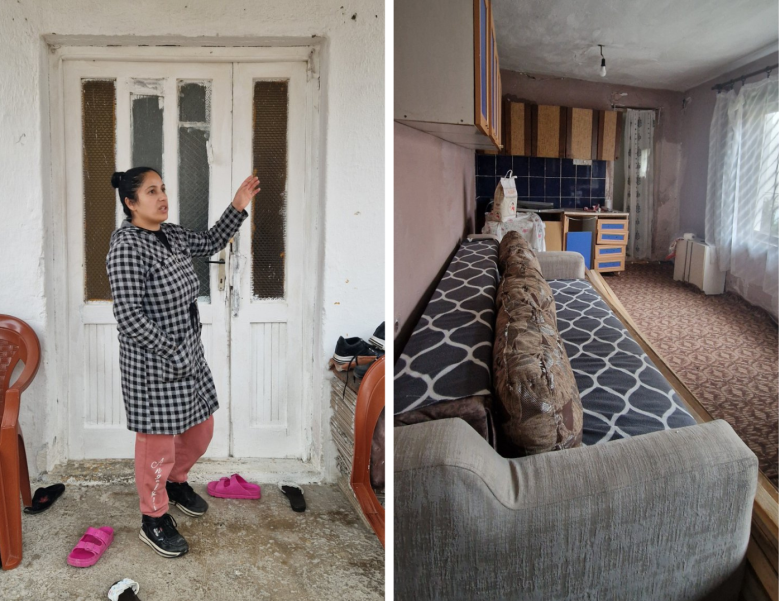
Building Brighter Futures Together
The Home Equals initiative exemplifies Habitat for Humanity’s mission to provide safe and decent housing for everyone. By addressing the unique needs of communities like “Stari Lozja” and Shuto Orizari, the project empowers residents to actively participate in shaping their future. It brings tangible improvements, such as streetlights and home repairs, while also advocating for systemic changes that address legal and infrastructural challenges.
Shaip’s and Almadet’s stories remind us that a home is more than just a roof over one’s head; it’s a foundation for dreams, dignity, and hope. Together, we can help turn their aspirations into reality.
Because HOME EQUALS hope, resilience, and a brighter future for all.
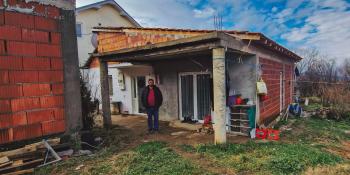
Home Equals: Transforming Lives and Building Hope
JANUARY 20, 2025
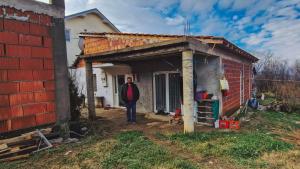
Habitat for Humanity International and wienerberger Extend Over Decade-Long Partnership to Build Brighter Futures
Excel CoolCoat: A Game-Changer for Heat-Stricken Families
Excel CoolCoat continues to make a lasting difference in the lives of families like Arulselvi’s. With heat relief and reduced energy costs, this affordable solution is helping families live more comfortably. As Excel Coatings expands its reach, the company is committed to ensuring that every home can experience the cooling benefits of this innovative product.
In previous articles, we explored how Excel Coatings is revolutionizing home cooling with its Excel CoolCoat product, and we shared the inspiring story of Sakuntala’s family, who experienced a transformative change in their daily lives.
Now, we bring you the story of Arulselvi’s family, another beneficiary of this innovative solution.
Learn how Excel CoolCoat has made their home more livable and brought lasting relief from the relentless summer heat, as we wrap up this series showcasing the profound impact of this affordable and sustainable cooling technology.
Excel CoolCoat: A Game-Changer for Heat-Stricken Families
Arulselvi, a stay-at-home mother has been living in a house built by her own father back in 2013 with her father, mother, brother, sister, husband and children. They used to struggle with the intense heat during the summer. “Before we applied it, the heat in our home was unbearable, as if we were in a sauna, especially in the kitchen,” she recalls. They had resorted to using air conditioning, racking up bills that put a strain on their limited income.
After discovering Excel CoolCoat through social media, Arulselvi decided to give it a try.
“We applied the coating last month, and the difference is astonishing! Now, we only need the air conditioning at night for only a couple of hours. CoolCoat application cost us around 20,000 rupees for our 800 square feet roof, but it’s worth every penny. I feel so relieved and grateful that I can finally enjoy my space without worrying about the heat,” she exclaimed.
The Ripple Effect
Excel CoolCoat is not just a product; it represents hope and a better quality of life for families who struggle to cope with extreme temperatures. The company’s commitment to making thermal comfort accessible to low-income households is yielding results, with around 1,400 to 1,600 low-income customers assisted in just six months. The positive feedback is pouring in, with many expressing gratitude for the cooler, more comfortable living conditions.
“I would definitely recommend it since it has made such a difference in our home,” echoed Mrs. Arulselvi.
Looking Ahead
With plans for expansion and a commitment to sustainability, Excel Coatings is set to make an even greater impact in the coming years. With the support of the Terwilliger Center for Innovation in Shelter, the company aims to share their success stories and pilot data with other manufacturers, fostering a broader market change in India’s heat-reflective coating landscape.
In a country where the heat can be relentless, Excel Coatings is a symbol of resilience, proving that with the right solutions, cooler and more comfortable homes are possible for everyone.
About the Terwilliger Center for Innovation in Shelter
Despite burgeoning demand for affordable housing, low-income families around the world remain underserved by housing markets. Shut out by the mortgage sector’s income and unable to afford high- quality building materials or certified labor, they build their homes incrementally, often with poor advice and substandard materials. As a division of Habitat for Humanity International, the Terwilliger Center for Innovation in Shelter focuses on the most pivotal yet uncharted intervention points in housing markets, piloting new approaches and making a business case where none exists. Since 2016, Habitat’s Terwilliger Center has helped more than 45 million people build or improve the place they call home. With the support of the Hilti Foundation, which supports the center’s efforts in India, the cool roof project has gained momentum.
As we conclude our three-part series on the transformative impact we’re making in communities across India, we hope you’ve gained valuable insights into our journey.
Together, these stories form a tapestry of resilience, innovation, and positive change—one that we’re proud to be weaving in partnership with people like you. Thank you for joining us on this journey of impact and possibility.
Read more
Read more about how this innovative product is transforming the lives of real families across India in these articles.
For those curious about the science and innovation behind Excel CoolCoat and how it is making life cooler, especially in India’s harsh climates, we encourage you to start with the first article How Excel CoolCoat is Making Life Cooler in India.
If you’d like to see the faces behind the stories—families and communities whose lives have been changed—and learn how TCIS played a pivotal role in boosting Excel CoolCoat’s mission, the article Transforming Lives with Cool Roofs. Real Stories from India is a must-read.
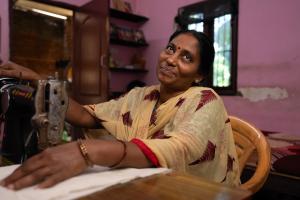
Transforming Lives with Cool Roofs. Real Stories from India
In this article, we dive into the real-world impact of Excel CoolCoat. From Sakuntala’s family to others across India, see how this cooling solution has transformed homes, providing comfort and peace during sweltering heat. Learn how partnerships and innovative marketing are making these life-changing solutions more accessible to low-income families.
In the previous article, we explored how Excel Coatings and its innovative product, Excel CoolCoat, are providing sustainable and affordable cooling solutions to families in India.
Now, we turn our focus to the human impact of this innovation—sharing the real stories of families whose lives have been transformed by the product. From greater comfort to improved quality of life, these testimonials highlight the profound difference Excel CoolCoat is making in communities across the country.
Transforming Lives with Cool Roofs. Real Stories from India
Meet Sakuntala’s Family
Sakuntala, a stay-at-home mother of three, had struggled all her life since her husband died when her sons were small so she had to take care of them herself. She only managed to move into her own house in January 2024.
“Before the coating, the heat was so intense that we often had to sleep outside under a tree. We couldn’t even enjoy our indoor kitchen because the heat was unbearable. We had to cook on a mud stove outdoors,” shared Ms. Sakuntala. After hearing about Excel CoolCoat through their church community, they decided to try it.
“Now, everything has changed! We can cook in comfort, and our indoor space has become a sanctuary rather than a source of stress. I no longer sweat while cooking, and we can finally use fans inside without feeling like we’re in an oven,” she recalls.
The cost for the coating was affordable and paid by the savings of the family. “I think the price is more than reasonable given the immense improvement in our living conditions. If anyone asks, I would wholeheartedly recommend it, as it has transformed our home into a place of comfort and peace,” she added with a smile.
Terwilliger Center for Innovation in Shelter: A Catalyst for Change
Recognizing the challenges they faced in reaching potential customers who could benefit from their product, Excel Coatings formed a strategic partnership with Habitat for Humanity’s Terwilliger Center for Innovation in Shelter. The Terwilliger Center is a unit of Habitat for Humanity that focuses on enhancing affordable housing solutions worldwide by fostering inclusive housing markets through innovative finance and market systems approaches. With the support of the Hilti Foundation, which supports the center’s efforts in India, the cool roof project has gained momentum.
With the Terwilliger Center’s guidance, the company identified a significant barrier: “Many low-income families thought these products were too expensive or not meant for them. But this heat-reflective coating is very affordable, costing less than other insulation and cooling options,” reflected the Director, Mr. Vidhyaprakash. To shift this perception, the center worked with Excel Coatings to implement a comprehensive strategy to improve direct consumer engagement, over traditional business-to-business (B2B) sales. To accomplish this, they leveraged innovative marketing strategies, including digital campaigns and influencer collaborations, which helped Excel Coatings expand its reach significantly.
“As a small company, it was tough to compete with industry giants. We knew our product had potential, but lacked the resources to reach a larger audience. The partnership with the Terwilliger Center gave us the financial and technical support we needed. In just three months, we saw 75% growth in direct sales, with product awareness skyrocketing. People began recognizing our product from videos—visibility we could never have achieved on our own,” recalls the Director.
Moreover, the Terwilliger Center encouraged Excel Coatings to execute pilot projects that showcased the effectiveness of their product in real-world settings. These demonstrations provided tangible evidence of the benefits, allowing potential customers to witness firsthand how the coating significantly improved indoor thermal comfort.
This data-driven marketing approach proved pivotal for Excel Coatings, enabling them to convert skeptics into loyal customers. The partnership not only enhanced Excel’s visibility in the market but also played a critical role in changing consumer attitudes toward heat-reflective solutions.
As the Director reflected: “With support from the Terwilliger Cener, the reach of the product skyrocketed, and the awareness went beyond expectations thanks to social media and influencer marketing. Across multiple platforms, social media promotion and influencer marketing, the total views of the ads were over 11 million people with about 1.6 million engagements. People started recognizing our product, saying they’d seen our videos—this kind of visibility was something we never could have achieved on our own.”
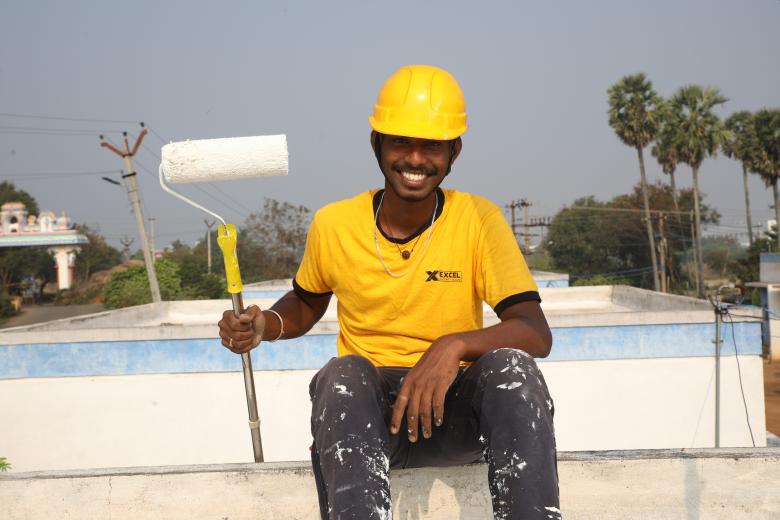
This strategic alliance has been instrumental in positioning Excel Coatings as a key player in the affordable housing industry in India, while making a meaningful difference in the lives of many families.
“Through the Terwilliger Center, we finally reached low-income households who didn’t even know such a product existed. It was eye-opening to learn how much they needed it, but [had always] thought it was too expensive. We then introduced a more affordable, eco-friendly version—half the price but with nearly the same performance. The impact was profound, especially for families who struggle to stay cool. For many, owning a home is a dream, and ensuring thermal comfort should be an attainable necessity rather than an impossible luxury,” summarizes Mr. Vidya Prakash.
Read more
Read more about how this innovative product is transforming the lives of real families across India in these articles.
For those curious about the science and innovation behind Excel CoolCoat and how it is making life cooler, especially in India’s harsh climates, we encourage you to start with the first article How Excel CoolCoat is Making Life Cooler in India.
If you’d like to see the faces behind the stories—families and communities whose lives have been changed—and learn how TCIS played a pivotal role in boosting Excel CoolCoat’s mission, the article Excel CoolCoat: A Game-Changer for Heat-Stricken Families is a must-read.
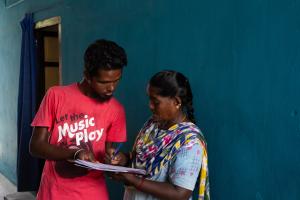
How Excel CoolCoat is Making Life Cooler in India
Excel Coatings is leading the charge in transforming homes across India with its affordable, sustainable cooling solution, Excel CoolCoat. This innovative product is helping families combat extreme summer heat, offering relief without the high cost of air conditioning. Discover how this simple, eco-friendly solution is reshaping the way millions live through the hottest months.
India is a country of vibrant cultures, diverse climates, and unique challenges—and among these is the unrelenting heat that millions endure during scorching summer months.
This article marks the beginning of a three-part series where we’ll explore how we are positively impacting communities across India.
From providing cost-effective, sustainable cooling solutions with Excel CoolCoat to transforming the lives of families through innovative partnerships, these stories will highlight the powerful ways our work is making a difference.
Let’s begin with how Excel CoolCoat is revolutionizing thermal comfort and reshaping what it means to live comfortably in India’s heat.
How Excel CoolCoat is Making Life Cooler in India
“It’s like living in an oven,” lamented a resident of Chennai, India, describing the unbearable heat that envelops their home during the sweltering summer months. With temperatures often soaring above 40°C, many parts of India experience intense heat that seeps into every corner of the house, making daily life a struggle. However, innovative solutions are on the horizon, and Excel Coatings is leading the charge in transforming lives in low-income households across India.
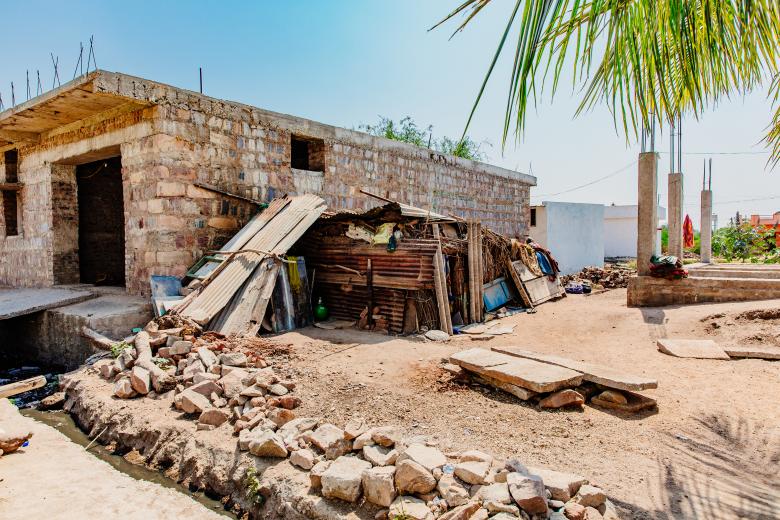
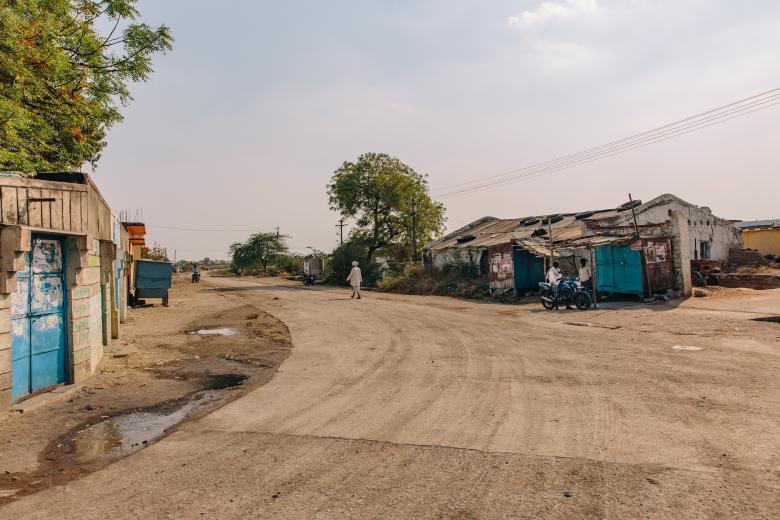
A Nation Battling the Heat
India’s climate is as diverse as its culture, but scorching summer months are a shared reality for millions. With urban areas experiencing “heat island” effects, and rural communities often lacking adequate shelter, many households find themselves facing insufferable indoor temperatures. A staggering 110 million housing units are projected to be needed in India by 2030, with 80-90% of the demand stemming from the low-income segment, which often cannot afford cooling solutions such as air-conditioning. On top of that, the World Bank estimates that by 2030, over 200 million people in India will be exposed to heatwaves, posing significant health risks and leading to the loss of 34 million jobs (source).
While government subsidy programs have addressed some of the housing needs, the vast majority of homes remain without affordable and sustainable cooling solutions—creating a significant gap that the coating products manufacturer Excel Coatings aims to fill with its products.
“Our aim is to help families live more comfortably without relying on expensive air conditioning, while prioritizing thermal comfort,” states the Director of Excel Coatings, Mr. Vidhyaprakash. This commitment is not just a business strategy; it’s a mission for this family-owned company that is committed to enhancing the quality of life for countless individuals. “During summer, when it’s 35 to 40 degrees [Celcius] outside, the temperature inside can shoot up to 45 to 50 degrees if the roof isn’t insulated. Without a heat-reflective coating, the house absorbs the sun’s energy, turning a home into an oven. Not only does it lead to health issues and discomfort, but even running an air conditioner won’t help much unless it’s on for hours, drastically increasing electricity bills,” says the Director.
The Excel CoolCoat Advantage
So, what exactly is Excel CoolCoat? It is a heat reflective coating, popularly known as cool roof paint - a low cost and simple yet powerful climate adaptation solution that lowers indoor temperatures. Cool roof paints are designed to reflect sunlight and absorb less heat compared to traditional roofing material leading to reduction in indoor temperature.
How It Works
1. Temperature control: Uncoated rooms can reach a sweltering 45-50°C when outdoor temperatures hover around 40°C. In contrast, coated rooms maintain a significantly cooler 39-41°C – on par with outdoor temperatures – providing a crucial 9°C reduction in extreme heat areas like Rajasthan.
![INDI-24-SL-339-00148-EDITED[51].jpg](/sites/default/files/styles/780w/public/2024-12/INDI-24-SL-339-00148-EDITED%5B51%5D.jpg?itok=SJzXinJI)
Coated Roof: A cool 33.9°C, showcasing the power of Excel CoolCoat.
![INDI-24-SL-339-00152-EDITED[5].jpg](/sites/default/files/styles/780w/public/2024-12/INDI-24-SL-339-00152-EDITED%5B5%5D.jpg?itok=ev7EFSdR)
Uncoated Roof: A scorching 46.9°C under the relentless summer sun.
2. Cost-effective: The total cost to coat a typical low-income household (about 300-325 square feet) ranges from 4,500 to 5,000 rupees (approx. 43 to 54 EUR), with a lifespan of 5-7 years. In comparison, installing an air conditioning unit can cost around 30,000 rupees, plus ongoing electricity expenses of 2,000 to 3,000 rupees per month. The return on investment for the Excel CoolCoat is about 12-14 months, meaning that over the lifespan of the roof families are able to enjoy cooler homes at significantly lower costs.
3. Sustainable solution: Unlike traditional air conditioning systems that contribute to CO2 emissions, Excel’s coating is an eco-friendly, passive cooling alternative.
4. Ease of application: Excel CoolCoat is user-friendly, allowing non-professionals to apply it easily. Compatible with both concrete and sheet metal roofs, the product’s versatility ensures it fits various housing structures, which is particularly valuable for the often poorly ventilated homes in low-income neighborhoods.
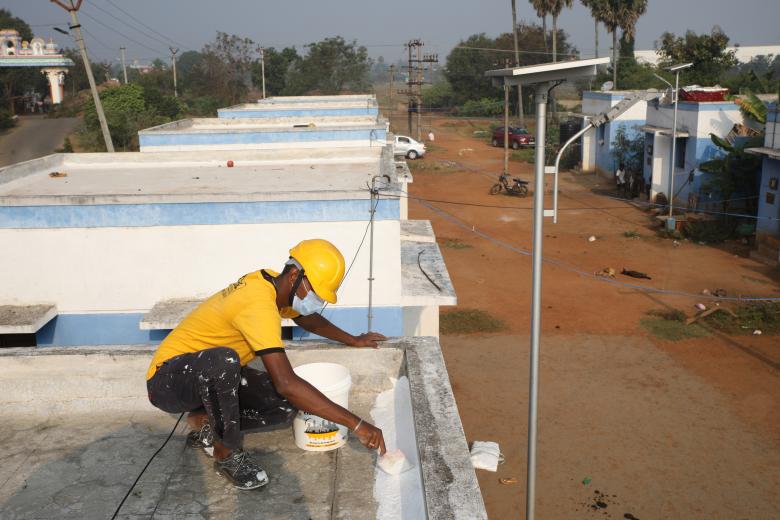
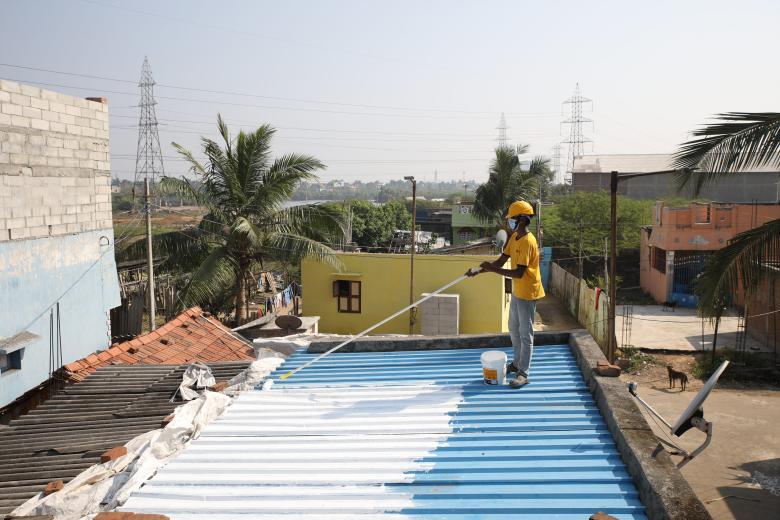
Excel Coatings has also partnered with Habitat for Humanity’s Terwilliger Center for Innovation in Shelter (TCIS) supported by Hilti Foundation to expand the reach of its innovative cooling solutions. This collaboration has helped the company connect with underserved low-income families, ensuring that products like Excel CoolCoat are accessible to those who need them most. Through the support of TCIS, Excel Coatings has been able to implement effective marketing strategies and pilot projects, showcasing how affordable and sustainable solutions can transform homes and lives across India.
Excel CoolCoat is more than just a product; it’s a lifeline for millions of families battling the relentless heat of Indian summers. By offering a cost-effective, sustainable, and easy-to-apply solution, Excel Coatings is helping households stay cooler, healthier, and more comfortable without the financial burden of traditional cooling methods.
Read more
Read more about how this innovative product is transforming the lives of real families across India in these articles.
If you’d like to see the faces behind the stories—families and communities whose lives have been changed—and learn how TCIS played a pivotal role in boosting Excel CoolCoat’s mission, the articles such as Transforming Lives with Cool Roofs. Real Stories from India and Excel CoolCoat: A Game-Changer for Heat-Stricken Families are a must-read.
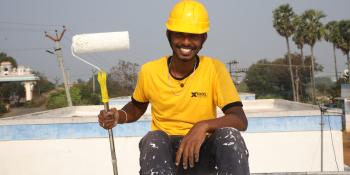
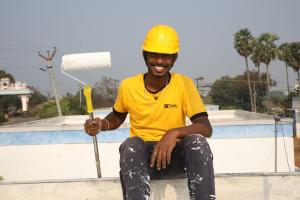
New Homes Mark Fresh Starts for Struggling Families
Every home holds a story, and for many families, the journey to finding a safe and secure place to live is filled with incredible challenges. In 2024, Habitat for Humanity organized hundreds of volunteering activities across our network all over the world, bringing hope and support to countless communities. In Romania in particular, over 270 dedicated volunteers helped transform lives through 3 big accelerated volunteering build events called Hope Build. As part of these efforts, eight families moved closer to their dream of having a home they can call their own. On this International Volunteer Day, we celebrate the resilience of these families and the generosity of those who built alongside them.
Every home holds a story, and for many families, the journey to finding a safe and secure place to live is filled with incredible challenges. In 2024, Habitat for Humanity organized hundreds of volunteering activities across our network all over the world, bringing hope and support to countless communities. In Romania in particular, over 270 dedicated volunteers helped transform lives through 3 big accelerated volunteering build events called Hope Build. As part of these efforts, eight families moved closer to their dream of having a home they can call their own. On this International Volunteer Day, we celebrate the resilience of these families and the generosity of those who built alongside them.
A Place to Grow, Heal, and Thrive: A Fresh Start for Families in Need
For many families, a new home represents more than just a physical structure—it symbolizes the possibility of a fresh start, a chance to heal, and a place to thrive. In these homes, families find the space, security, and stability they’ve longed for after enduring difficult and often abusive living situations.
The stories of these families are a testament to resilience and hope, as they embark on new journeys of rebuilding their lives.
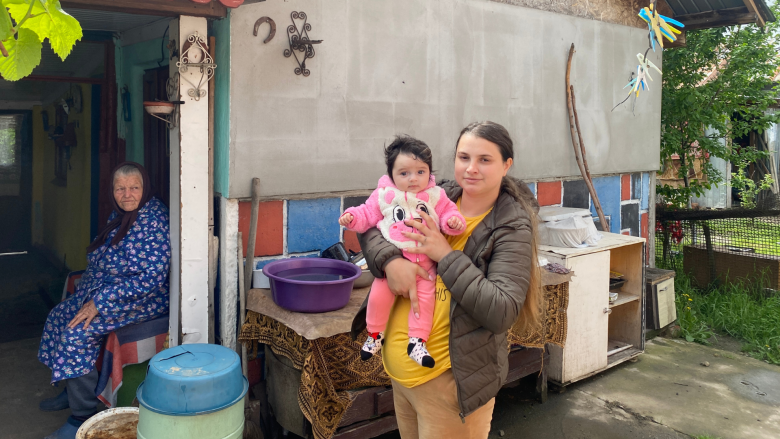
Monica Băicoianu, a 24-year-old single mother, knows firsthand the struggles of living in cramped, unsuitable conditions. She once shared a one-room rental with her infant daughter, Cataleya. This small, overcrowded space served as their bedroom, kitchen, and bathroom all at once. “I want Cataleya to grow up somewhere she can feel safe,” Monica shared, her voice filled with hope. “This home means she will have the start I could only dream of.”

Similarly, Dragos and Adriana Feraru, along with their three children, lived in a cramped two-room apartment. Dragos’s modest income as a construction worker barely covered the basics, leaving little room for improvement in their living situation. Their new home in Berceni will offer not just space but also the stability they’ve been seeking. “It will be a place where our children can grow, play, and dream,” Adriana said.
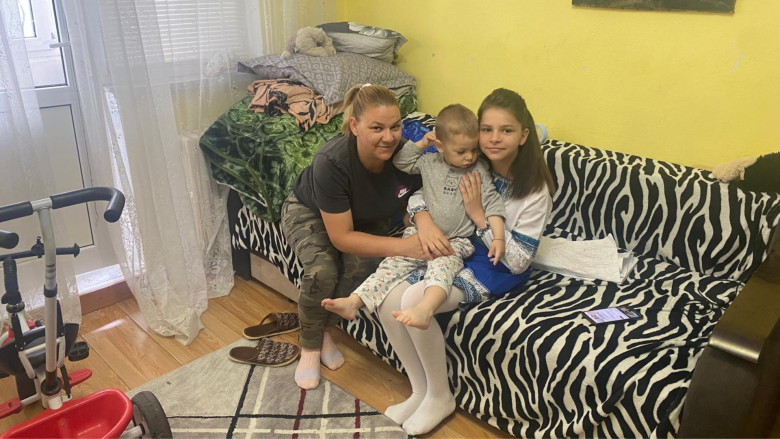
For Mihaela Albișteanu, the struggle to rebuild her life after leaving an abusive relationship has been a painful yet necessary journey. A single mother of four, Mihaela faced the hardship of renting a decaying house while working low-paying jobs to keep her children in school. “This home will not be just a shelter—it’s a lifeline,” she said, her voice filled with relief. “For the first time, I feel like we have a future.”

The Calcan family has also lived under a constant shadow of instability. Marian and Alexandra, along with their five-year-old daughter, had been living with Marian’s mother, where the atmosphere was tense and filled with conflict, partly due to Marian’s mother’s struggles with alcoholism. “We deeply desire a new home because it would mean our peace,” Alexandra explained. “This new house represents freedom from fear and a space where we can raise our daughter with love and stability.”
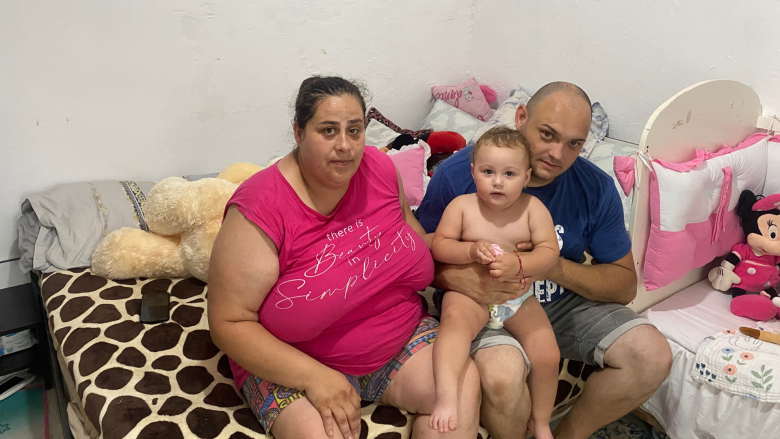
The Constantin family faced a similarly challenging living situation. Alexandru and Georgiana, along with their baby daughter Erika, lived in a cramped, moldy room at Alexandru’s parents’ house. “We need our own place,” Alexandru said. “A safe, clean home where we can give Erika the childhood she deserves.”
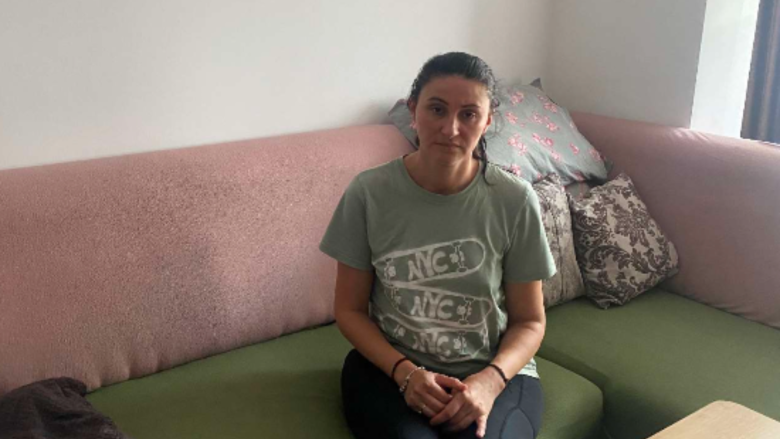
The new homes built in Zemes stand as a testament to the strength and resilience of these families. Oana Pintilie, for example, left an abusive marriage in order to protect her son, Andrei. However, the instability of moving from one rental to another left her feeling uncertain about the future. Pregnant with her second child, Oana expressed deep gratitude for the opportunity to start fresh. “This house is our new beginning—a chance to heal and grow as a family,” she said, her eyes filled with optimism.
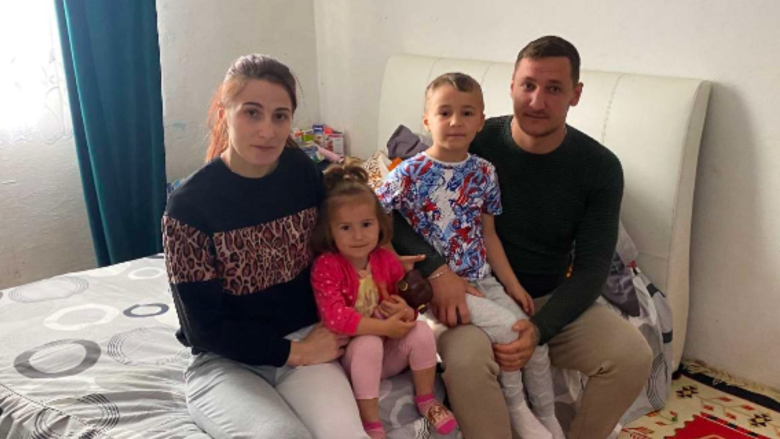
The Anghi family, who had lived in a neglected apartment without electricity, had faced unimaginable hardships. “We dreamed of a home where our children could sleep peacefully and play safely,” said the young parents. “Now, that dream is real.” Their new home will give their children the security they need to grow up with a sense of safety and comfort.
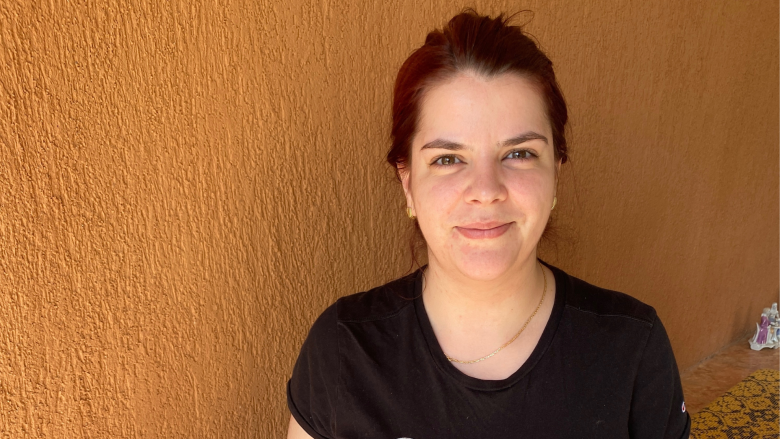
Similarly, 26-year-old Alexandra Puiu has lived with her grandparents, where constant conflicts with her father made it impossible for her to find peace. “I dream of a house where I can live in peace and start a family,” Alexandra said, her determination shining through despite the challenges. With her nursing diploma in hand and a clear vision of the life she wants to build, Alexandra looks forward to moving into her new Habitat home—a place where love, laughter, and hope can flourish.
These families’ journeys highlight the importance of having a safe, stable home—a space where they can heal from the scars of the past, find peace, and create a better future for themselves and their children.
Each new house is not just a shelter; it is a sanctuary that will allow these families to grow, thrive, and build the lives they’ve always dreamed of.
Building Homes, Building Hope
The three building events in Tutora, Berceni, and Zemes, Romania, were nothing short of extraordinary. Over just five days in each location, volunteers worked tirelessly to construct duplexes from the ground up—installing walls, mounting roofs, applying insulation, and perfecting interiors. The energy and commitment of the volunteers transformed blueprints into tangible homes, and more importantly, into foundations for better lives.
A Heartfelt Thanks
None of this would have been possible without the extraordinary efforts of volunteers from across the Europe and Middle East region, including teams from Telus, Hilti, Auchan, The Church of Jesus Christ of Latter-day Saints, VELUX, DOVISTA, Employee Foundation of VKR Group, Mercedes, BRD, wienerberger, GRAITEC, Henkel, SWECO, Dedeman, ProTV. Their hands-on work and unwavering support brought not only houses to life but also inspired renewed strength in the families who will live in them.
As we reflect on the incredible impact of 2024’s builds, we’re reminded of Habitat for Humanity’s vision: a world where everyone has a decent place to live.
Thank you to every volunteer who made these dreams possible.
Your dedication proves that, together, we can build more than homes—we can build hope, community, and a brighter future.

New Homes Mark Fresh Starts for Struggling Families
DECEMBER 2, 2024

